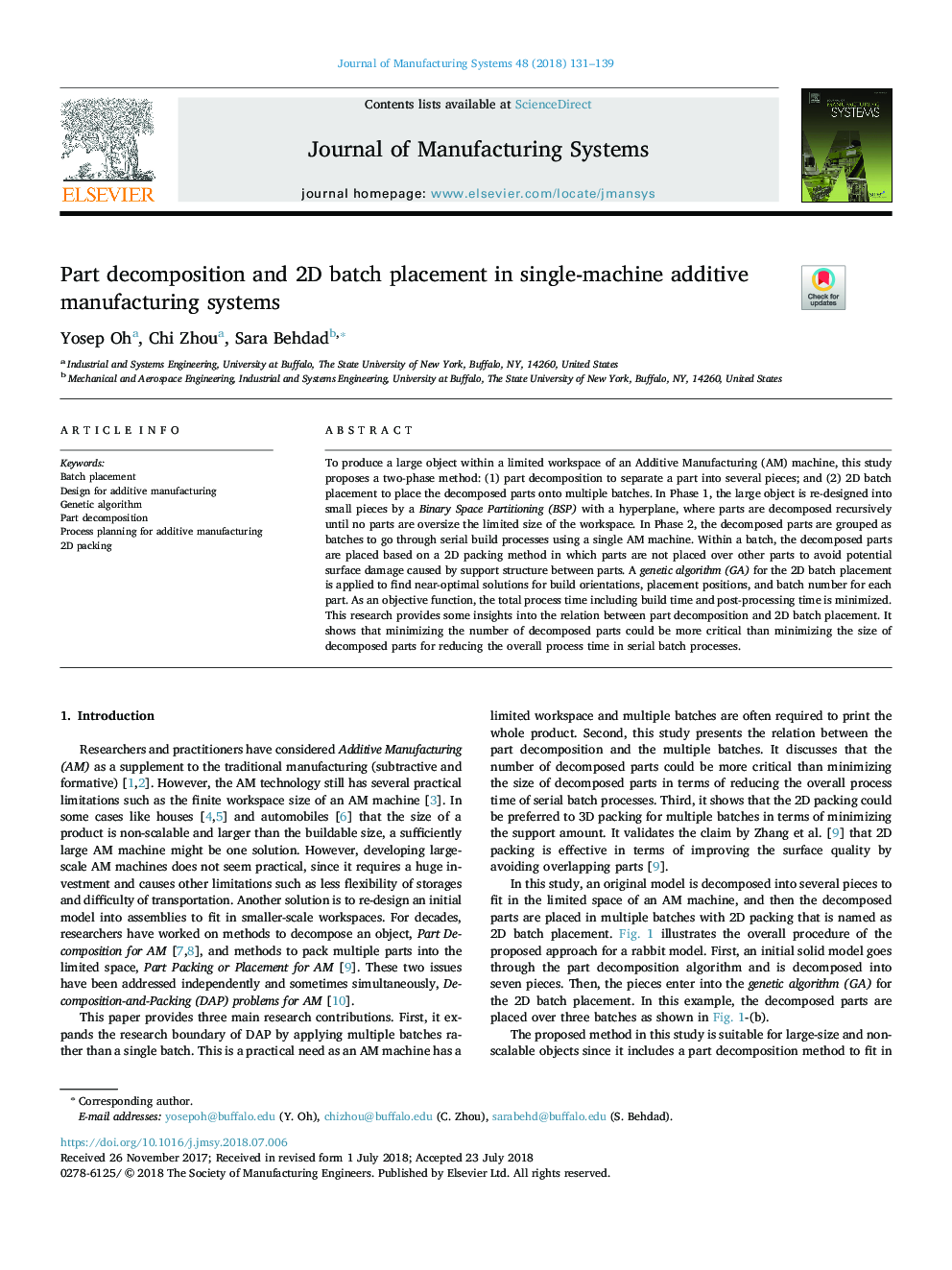| Article ID | Journal | Published Year | Pages | File Type |
|---|---|---|---|---|
| 8048253 | Journal of Manufacturing Systems | 2018 | 9 Pages |
Abstract
To produce a large object within a limited workspace of an Additive Manufacturing (AM) machine, this study proposes a two-phase method: (1) part decomposition to separate a part into several pieces; and (2) 2D batch placement to place the decomposed parts onto multiple batches. In Phase 1, the large object is re-designed into small pieces by a Binary Space Partitioning (BSP) with a hyperplane, where parts are decomposed recursively until no parts are oversize the limited size of the workspace. In Phase 2, the decomposed parts are grouped as batches to go through serial build processes using a single AM machine. Within a batch, the decomposed parts are placed based on a 2D packing method in which parts are not placed over other parts to avoid potential surface damage caused by support structure between parts. A genetic algorithm (GA) for the 2D batch placement is applied to find near-optimal solutions for build orientations, placement positions, and batch number for each part. As an objective function, the total process time including build time and post-processing time is minimized. This research provides some insights into the relation between part decomposition and 2D batch placement. It shows that minimizing the number of decomposed parts could be more critical than minimizing the size of decomposed parts for reducing the overall process time in serial batch processes.
Related Topics
Physical Sciences and Engineering
Engineering
Control and Systems Engineering
Authors
Yosep Oh, Chi Zhou, Sara Behdad,
